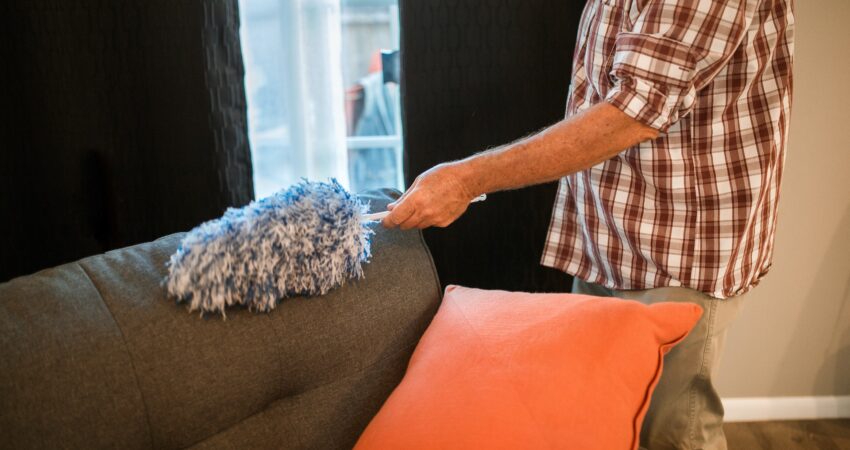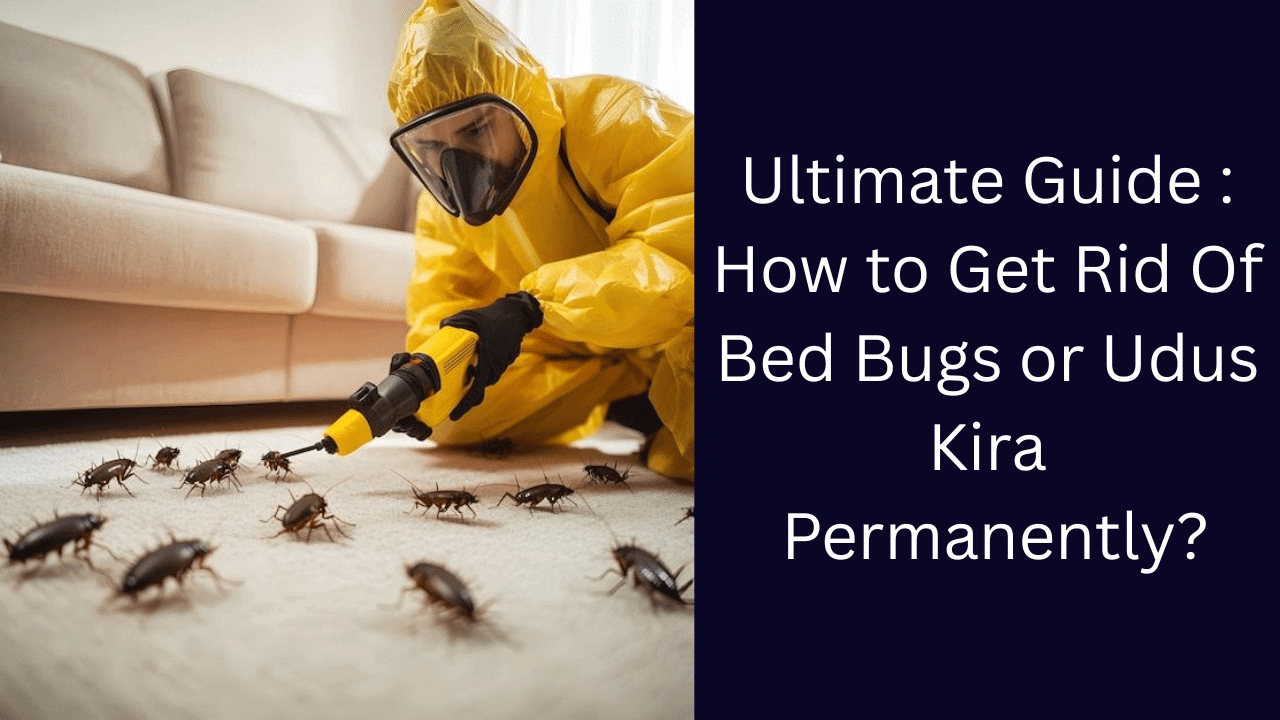How To Clean Any Type Of Sofa
The sofa is undeniably one of the most important pieces of furniture in any household. It serves as a gathering spot for family and friends, a cozy haven for relaxation, and a statement of style in your living space. To keep your sofa looking and feeling its best, regular cleaning is essential. In this blog post, we will delve into how often you should clean your sofa, why it is important to do so, and provide you with easy tips and tricks to effectively clean different types of sofas.
How Often Should You Clean Your Sofa
The frequency of use, the size of the household, and whether or not there are children or pets will all affect how often you clean your sofa. To remove surface dirt and prevent buildup of dust, it is generally advised to vacuum your sofa at least once every week. To maintain its beauty and lengthen its lifespan, it’s also essential to give your sofa a deeper clean every six to twelve months.
Why Should You Clean Your Sofa Regularly?
Aesthetics: A clean sofa improves the aesthetics of your living area, giving it a more welcoming and maintained appearance.
Health and Hygiene : Sofas can gather dust, allergens, and bacteria, which can cause allergies and respiratory problems. A better living environment is promoted by regular cleaning, which helps remove harmful particles.
Durability: By routinely cleaning your sofa, you may avoid pollutants from invading the fabric and causing early wear and tear. This increases the lifespan of your sofa.
How To Clean Your Sofa ?
When it comes to sofa cleaning, you may come across specific codes or labels such as “W,” “S,” “WS,” “X,” and “D.” These codes provide guidelines for the recommended cleaning methods based on the fabric used on the sofa. Here’s what each code signifies:
- ” W ” ( Water Based Cleaning )
When a sofa is marked with a “W,” it signifies that water-based cleaners can be used to clean it. Most fabric types can be cleaned with water-based solutions because they are gentle. For basic cleaning or to remove stains from the sofa, you may usually use a solution of light soap or detergent and water. Always follow the manufacturer’s detailed instructions and test the cleaner on a small, discrete area first.
- “S” ( Solvent )
If your sofa has a “S” code, you should clean it with a solvent-based cleaner. Without using water in their composition, solvent-based cleaners work to lift and dissolve stains from fabrics. With a “S” code, you can find specialized furniture cleaners that are designated as safe for use on couches. Once more, it’s essential that you strictly adhere to the manufacturer’s recommendations and carry out a patch test before using the cleaner on the entire sofa.
- “WS” ( Water / Solvent )
A sofa marked “WS” is appropriate for cleaning with both solvent- and water-based products. This means that you have a choice to select one or the other based on the kind of stain or the cleaner you have on hand. To choose the best cleaning technique, always refer to the manufacturer’s instructions.
- ” X ” ( Professional Cleaning Only )
If your sofa is marked with a “X,” it has to be cleaned by professonal sofac cleaners. Sofas with a “X” code shouldn’t be cleaned with water or solvents by professionals since the fabric could be harmed. To handle the cleaning process, it is best to get in touch with a professional couch cleaning service.
- “D” ( Dry Cleaning Only )
The “D” code, although less often on couch labels, may occasionally be present and denote that the fabric of the sofa should be dry washed. Without using water, dry cleaning means using specific chemicals to clean clothes. It is crucial to follow the directions and send your sofa to a professional dry cleaner for effective cleaning if it has a “D” code.
Step 1 : Remove the Cushions and Vacuum
Start by taking the sofa’s cushions off. Confirm whether the cushions’ removable coverings can be washed separately as directed by the manufacturer. If so, use this chance to wash the covers in accordance with the suggested instructions. Once the cushions have been taken off, thoroughly vacuum the sofa, including the seat and backrest, using a vacuum with a brush attachment. Pay close attention to the gaps and corners where dirt and other debris may collect. To avoid causing damage to the fabric, be thorough yet delicate.
Step 2 : Clean the Wood and Metal Details
Many sofas have wooden or metal decorations, such as the frames, legs, or armrests. To keep these components looking their best, they need to be cleaned in a particular way. Start by wiping off metal details with a soft, moist cloth to get rid of any surface dust or debris. When dealing with tough stains or dirt, warm water and a light detergent should be used to gently scrub the affected parts. To prevent the filth from spreading, rinse the cloth or brush frequently. After cleaning, use a clean, dry cloth to remove any remaining moisture from the metal details. By doing this, rust or water stains are avoided.
When it comes to wood details, begin by dusting them with a microfiber cloth or a soft brush to remove loose dirt and debris. Be gentle to avoid scratching the wood surface. Use a professional wood cleaner or a warm water and mild soap solution to clean and condition the wood. Wipe the wood details in the direction of the grain after dampening a cloth with the cleaning solution and wringing off extra moisture. Do not completely submerge the wood in water. To remove any remaining moisture after cleaning, wipe the wood with a clean, dry towel. Apply a wood conditioner or polish if desired to improve the sheen and safeguard the wood.
Step 3 : Clean Sofa and Cushions
Now it’s finally time to clean your sofa and treat the stains. While it may seem tempting to just grab a bottle of chemical and start cleaning, remember that the type of cleaning procedure that your sofa requires strictly depends upon the material of your couch. Here’s some cleaning tips based on the material.
Leather Couch
Leather sofas are known for their luxurious and timeless appeal. They are durable, easy to maintain, and come in different finishes such as full-grain, top-grain, or bonded leather. Cleaning a leather sofa involves gentle vacuuming to remove loose dirt, wiping with a mild soap and water solution, and conditioning the leather to keep it soft and prevent cracking.
Steps :
- Vacuum the sofa using a soft brush attachment to eliminate loose dirt.
- Mix a solution of mild soap and warm water.
- Dampen a microfiber cloth with the soapy solution and gently wipe the leather, focusing on stained or soiled areas.
- Rinse the cloth and wring out excess water to remove soap residue.
- Wipe the sofa again using a damp, clean cloth.
- Condition the leather with a suitable leather conditioner to restore its natural shine and prevent cracking.
Fabric Sofa
Popular fabric sofas can be found in cotton, linen, polyester, or a combination of these materials. They come in a variety of styles and colors and are adjustable and comfy. Vacuuming is frequently used to remove surface dust from fabric sofas, followed by spot cleaning with mild detergents for stains and deep cleaning with steam cleaners or expert assistance.
Steps :
- Vacuum the sofa to remove loose dirt and debris.
- Check the manufacturer’s instructions for cleaning codes. “W” indicates that you can use a water-based cleaner, “S” requires a solvent-based cleaner, while “WS” or “X” may need professional cleaning.
- Spot clean stains using a mild detergent or a commercial fabric cleaner, following the instructions on the product.
- For overall deep cleaning, consider using a steam cleaner or hire professional upholstery cleaning services.
Microfiber Sofa
Synthetic fibers that are incredibly thin and tightly packed are used to make microfiber couches. They are long-lasting, easy to clean, and stain-resistant. A microfiber sofa can usually be cleaned by vacuuming away loose dirt, using a mild detergent or fabric cleaner to spot-treat stains, and letting the fabric air dry.
Steps :
- Vacuum the sofa with a brush attachment to remove loose dirt and dust.
- Mix a solution of warm water and mild dish soap or upholstery cleaner.
- Dampen a white cloth in the soapy solution and gently blot the stains or dirty areas.
- Rinse the cloth and blot the sofa with plain water to remove any soap residue.
- Allow the sofa to air dry or use a fan to speed up the process. Brush the fabric with a soft brush to restore its texture.
Velvet Couch
Sofas made with velvet have a rich, elegant appearance and feel. They are frequently manufactured from synthetic or natural materials like cotton or silk. Gentle vacuuming, spot cleaning with a solvent-based solution made specifically for velvet, and brushing the fabric to bring back its texture are the steps involved in cleaning velvet sofas.
Steps :
- Start by vacuuming the sofa using a soft brush attachment to remove loose dirt and debris. Be gentle to avoid damaging the delicate fabric.
- Check the manufacturer’s instructions for cleaning codes. Most velvet sofas are labeled with a “S” code, which means they require a solvent-based cleaner.
- Purchase a solvent-based upholstery cleaner specifically designed for velvet fabrics.
- Test the cleaner on a small, inconspicuous area of the sofa to ensure it doesn’t cause any discoloration or damage.
- Following the instructions on the cleaner, apply it to a clean, white cloth and gently blot the stained areas. Avoid rubbing or scrubbing the fabric.
- Use a dry cloth to blot up any excess moisture.
- To restore the texture of the velvet, gently brush the fabric using a soft-bristle brush or a velvet brush in the direction of the nap.
- Allow the sofa to air dry thoroughly before using it again.
Silk Sofa
Silk sofas have a shiny, smooth texture that expresses elegance and sophistication. But silk is a delicate material that needs special handling. Regular maintenance includes blotting spills with a dry cloth right away and gently vacuuming to remove loose particles. It is advised to seek the advice of a professional silk couch cleaner for deep cleaning.
Steps :
- For routine maintenance, vacuum the sofa using a soft brush attachment on a low suction setting to remove loose dirt and dust.
- Address spills or stains immediately by blotting the area gently with a clean, dry cloth. Avoid using water or any cleaning solutions as they may damage the silk fabric
- If necessary, consult a professional sofa cleaner who specializes in silk upholstery to treat stubborn stains or spills.
- Keep your silk sofa away from direct sunlight, as prolonged exposure can cause the color to fade.
- Avoid placing sharp objects or items with rough edges on the sofa to prevent snags or tears.
- Regularly fluff and rotate the cushions to ensure even wear and maintain the sofa’s shape.
In this blog post, we’ve discussed the value of routine sofa cleaning, how frequently you should do it, and different cleaning techniques for various sofa types. Each sofa material, including fabric, leather, microfiber, velvet, and silk, needs a certain type of care to ensure durability and maintain their attractiveness. Even while do-it-yourself cleaning techniques can be successful, there are advantages to using a professional sofa cleaning service for an in-depth and hassle-free job. Professionals can ensure that your sofa receives the care it needs, extending its lifespan and maintaining it in its best condition thanks to their knowledge and specialist equipment. Let’s explore the world of sofa cleaning armed with the knowledge we need to make wise choices and easily maintain the center of your house.




